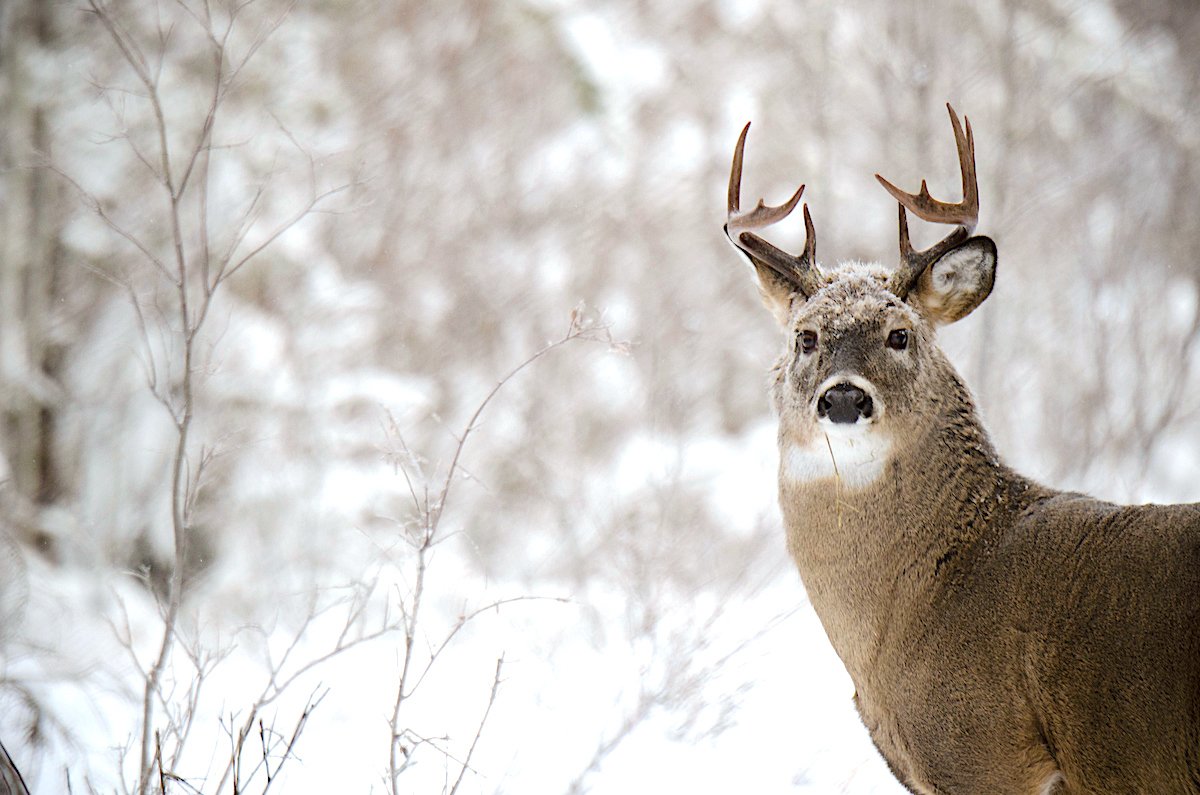As we well know our winters can be a time of shortened daylight hours, cold temperatures, snow covered ground and the occasional blizzard. We manage to get through the winter with heated cars, houses, layers of clothes and reduced exposure to the elements.
The question is…
The animals in our area must survive the same conditions as we do, so how do they manage to do it?
The conditions that signal animals to prepare for winter are still under study but daylight length, weather and food supply seem to be factors.
There are a few ways that the animals have developed to survive the winter. They can migrate, adapt or hibernate.
Most of our song birds and waterfowl, choose the migration option and fly south to where conditions are more favorable in terms of temperature, food, habitat and possibly breeding. Not all of our birds migrate and those that stay have developed some special ways to help cope. All the birds that remain here use their feathers as insulation. Feathers are amazingly good insulators and when birds puff them up, air gets trapped in. This trapped air is then warmed by the bird’s body and acts like a central heating system. Birds will often only stand on one foot at a time, keeping one leg tucked up into the feathers.
Another strategy is seeking warmth in numbers or shelter. You may see sparrows and other birds grouped together. This version of a group hug helps to retain heat. This type of activity is often used at night. Birds will also flock up in trees, particularly coniferous trees, to seek protection from the wind and the weather in general. On particularly unpleasant days birds will not leave their places of refuge at all. They will wait for better conditions before venturing out. At night the birds can slow down their body functions as an energy saving technique. Some birds have developed a special type of shivering to generate warmth.
As for food supply, birds have a number of different ways of dealing with the situation. Some of the birds do overeat in the time period just before the weather takes a turn. Most of the extra food intake is turned into fat and stored on their bodies for future use. Because birds still have to be able to fly they cannot accumulate too much in the way of extra weight. Some of the overwintering birds hide seeds and other energy sources in the bark of trees or other nooks and crannies. The idea being that they will find it later when they need it. The Chickadee is an example of a bird that hides food items away for future use. The Chickadee has been shown to have the memory part of its brain increase in size in the fall of the year and then return to normal size in the spring. This increased brain capacity is thought to help the Chickadee remember where it has hidden its food supplies. The Common Redpole has a special storage place in its throat region. This permits the bird to quickly gather seeds, store them and return to a safe place. Once out of harm’s way it retrieves the seeds from the special storage area and proceeds to digest them.
A number of animals use body and behavioural changes as a way of coping with the winter.
The whitetail deer we see in our neighbourhood are good examples of these adaptations. The deer makes changes to their coat. The outer guard hair, which is hollow, thickens making it a good insulator. An inner coat is grown to add extra layer of insulation. The colour of the coat darkens considerably compared to the summer coat. This colour change allows them to blend better with their surroundings and makes it harder for predators to see them. The dark colour also absorbs the energy from the sun better than the lighter coat. The coat acts as a solar heater on the warmer sunny days. The deer reduce their activity level during the cold periods as an energy conservation method, a strategy shared by other species a such as the bison. At night, in particular they will form groups, where a number of deer will come together to share mutual warmth. This gathering together is called yarding. The deer also change the type of food that they eat during the winter. Because they are browsers and not grazers a general covering of snow does not affect their food supply. Instead of leaves and shoots they will eat plant buds, twigs and the bark of trees. To help with the energy use requirements the deer can lower their body metabolism and therefore require less food intake.
FortWhyte’s Bison Herd hunkering down during a snowfall.
Check out our second episode in this series: Animals in winter – How do they survive? Episode #2 to learn about more strategies for survival that animals aroudn us implement to make it through the winter months.









